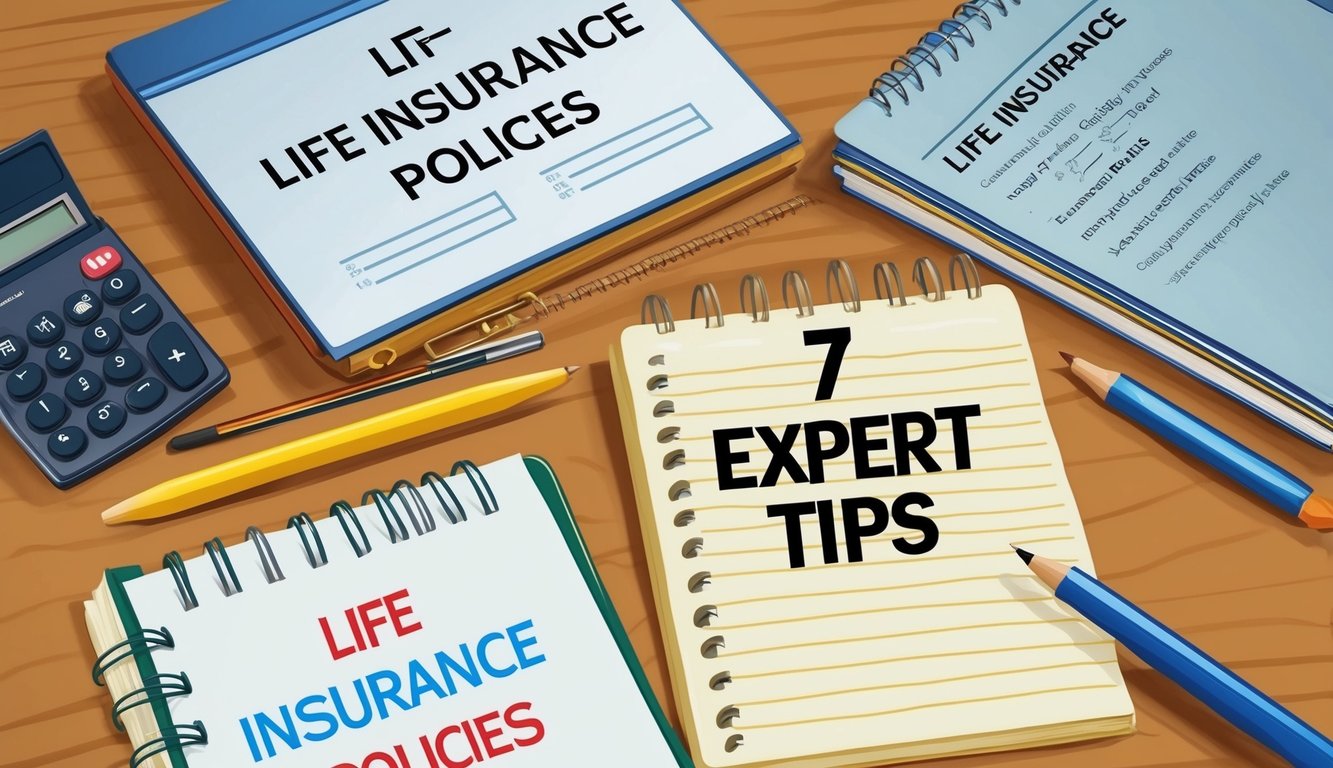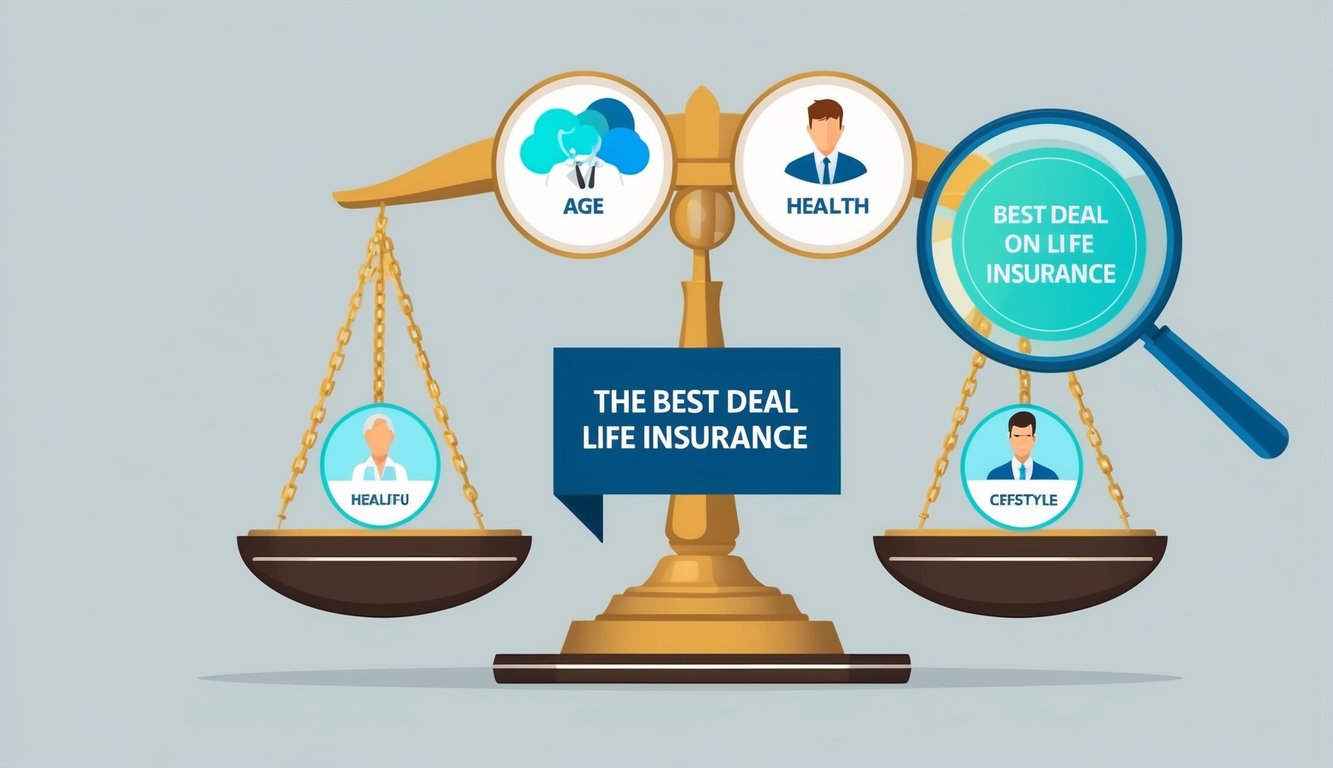Life insurance provides financial protection for your loved ones, but finding the right policy at the best price can be challenging.
With numerous options available, it’s important to approach the process strategically to ensure you get the coverage you need without overpaying.
By following expert tips, you can save money on life insurance premiums while still securing adequate protection for your family. These strategies can help you navigate the complexities of life insurance shopping and make informed decisions about your coverage.
From comparing quotes to optimizing your health, there are several ways to find the right policy for your budget.
1) Compare Multiple Quotes
Getting the best deal on life insurance starts with comparing quotes from different providers.
Don’t settle for the first offer you receive.
Instead, shop around and gather quotes from at least 3-4 insurers.
Life insurance comparison sites can save you time and effort.
These platforms allow you to input your information once and receive multiple quotes quickly.
This eliminates the need to contact each company individually.
When comparing quotes, ensure you’re looking at policies with similar coverage levels.
For example, compare $250,000 term life policies across different providers.
This apples-to-apples comparison will help you identify the most competitive rates.
Quotes can vary significantly between insurers.
Factors like your age, gender, and health status influence the premiums.
For instance, a 30-year-old woman might pay $12 per month for a $250,000 10-year term policy, while a man of the same age could pay $14.
Don’t focus solely on price.
Consider the insurer’s financial stability, customer service reputation, and policy features.
A slightly higher premium might be worth it for better coverage or a more reliable company.
2) Understand Your Coverage Needs

Determining your life insurance coverage needs is crucial for getting the best deal.
Start by calculating how much life insurance you need.
Consider your current financial obligations and future expenses.
Think about your family’s long-term financial needs if you were to pass away.
This includes replacing your income, paying off debts, and covering everyday expenses.
Factor in specific goals like funding your children’s education or paying off a mortgage.
These objectives will help you determine the appropriate coverage amount.
Consider your timeline for coverage.
Do you need insurance until retirement or for a specific period, like while your children are dependents?
Assess your need for life insurance by evaluating your current savings and assets.
This will help you determine how much additional coverage you require.
Don’t forget to account for inflation and potential increases in living costs over time.
Your coverage should be sufficient to meet future financial needs.
Review your existing insurance policies, including those provided by your employer.
This will help you identify any gaps in coverage that need to be addressed.
3) Review the Insurer’s Financial Health

When selecting a life insurance company, it’s crucial to evaluate its financial stability.
A financially strong insurer is more likely to be around when your beneficiaries need to make a claim.
You can check an insurer’s financial strength by reviewing ratings from independent agencies.
These include Standard & Poor’s, Moody’s, and A.M. Best.
Each agency uses a different rating system, so familiarize yourself with their scales.
Look for insurers with high ratings, typically in the “A” range or above.
These ratings indicate a company’s ability to meet its financial obligations to policyholders.
You can access insurer ratings on the rating agencies’ websites.
Some agencies may require a free account creation to view detailed information.
Consider the insurer’s longevity in the market.
Companies with a long history of stability and good financial management are often safer choices.
Don’t forget to check for customer complaints and reviews.
While not directly related to financial health, a high number of complaints might indicate potential issues with claim payments or customer service.
4) Consult an Independent Agent

When seeking the best deal on life insurance, consulting an independent agent can be invaluable.
Unlike captive agents who work for a single company, independent agents represent multiple insurers.
This gives you access to a wider range of options and potentially better rates.
Independent agents can compare policies from various companies to find the one that best fits your needs and budget.
They have in-depth knowledge of different insurers’ offerings and can provide unbiased advice.
This expertise can help you navigate the complex world of life insurance more effectively.
Independent agents can evaluate your specific situation and recommend the most suitable coverage.
They may identify discounts or deals you might have missed on your own.
When choosing an independent agent, look for someone with experience and a good reputation.
Ask about their qualifications and the insurers they work with.
5) Consider Term Life Insurance
Term life insurance offers affordable coverage for a specific period, typically 10-30 years.
It’s an excellent option if you want to protect your family during crucial years, like when raising children or paying off a mortgage.
When shopping for term life insurance, compare quotes from multiple providers. Gather your medical history and personal information to get accurate premium estimates.
Look for policies with level premiums, which keep your payments consistent throughout the term.
This feature helps with budgeting and ensures your coverage remains affordable.
Pay attention to the policy’s convertibility options.
Some term policies allow you to convert to permanent coverage without a medical exam, providing flexibility for future needs.
Consider riders that can enhance your coverage, such as accelerated death benefits or return of premium options.
These add-ons may increase costs but can offer valuable benefits.
When determining coverage amount, factor in your income, debts, and future financial goals.
A common rule of thumb is to multiply your annual income by 10-15 for a starting point.
Research reputable insurers with strong financial ratings.
Companies like Guardian, Pacific Life, and Protective consistently rank among the top term life insurance providers.
6) Check for Policy Riders
When shopping for life insurance, it’s crucial to consider policy riders.
These optional add-ons can enhance your coverage and provide additional benefits tailored to your specific needs.
Life insurance riders are supplementary features that can be attached to your main policy.
They offer extra protection or flexibility, often at an additional cost.
Common riders include accelerated death benefits, which allow you to access a portion of your death benefit if you’re diagnosed with a terminal illness.
This can help cover medical expenses or other costs during your final days.
Another popular option is the child term rider, which provides coverage for your children without the need for separate policies.
This can be a cost-effective way to ensure your entire family is protected.
Long-term care riders are worth considering if you’re concerned about potential future care needs.
These allow you to use a portion of your death benefit to pay for long-term care services if required.
When evaluating riders, carefully assess their costs and benefits.
Some may be included at no extra charge, while others can significantly increase your premiums.
Be sure to discuss available riders with your insurance agent or company representative.
They can help you determine which options align best with your financial goals and personal circumstances.
7) Read Customer Reviews
Reading customer reviews can provide valuable insights when searching for the best life insurance deal.
Look for feedback from policyholders about their experiences with different companies.
Pay attention to reviews that discuss customer service quality, claim processing efficiency, and overall satisfaction.
These factors can significantly impact your long-term relationship with an insurer.
Be sure to check reviews on multiple platforms. ConsumersAdvocate.org offers in-depth reviews of life insurance companies that can be helpful in your research.
Consider the reputation of insurers like Haven Life, which offers simplified underwriting processes and potentially no medical exams for some policies.
Look for patterns in customer feedback.
If many reviewers mention similar positive or negative experiences, it may indicate consistent strengths or weaknesses of the company.
Remember that extremely positive or negative reviews might not always reflect typical experiences.
Focus on balanced reviews that provide specific details about the insurer’s performance.
Take note of how companies respond to negative reviews.
This can give you an idea of their commitment to customer satisfaction and problem resolution.
Use customer reviews as one part of your decision-making process.
Combine this information with other factors like policy options, pricing, and financial stability ratings to make an informed choice.
Understanding Different Types of Life Insurance Policies

Life insurance policies come in several varieties, each with unique features and benefits.
Your choice depends on your financial goals and circumstances.
Term Life Insurance
Term life insurance provides coverage for a specific period, typically 10, 20, or 30 years.
It offers a death benefit to your beneficiaries if you pass away during the term.
This type is often the most affordable option, making it popular for young families and those on a budget.
You pay fixed premiums throughout the term.
If you outlive the policy, it expires without any payout.
However, many insurers offer the option to convert your term policy to permanent coverage.
Whole Life Insurance
Whole life insurance provides lifelong coverage and includes a cash value component that grows over time.
Your premiums remain constant throughout your life.
Part of your premium goes towards the death benefit, while another portion builds cash value.
This cash value grows tax-deferred and can be borrowed against or withdrawn.
Whole life policies often come with guaranteed returns on the cash value.
They’re typically more expensive than term policies but offer the security of lifelong coverage.
Universal Life Insurance
Universal life insurance offers more flexibility than whole life.
It allows you to adjust your premiums and death benefit as your needs change.
Like whole life, it has a cash value component.
The growth of this cash value is tied to a specific investment account or index.
You can use the accumulated cash value to pay premiums, potentially reducing your out-of-pocket costs.
However, poor investment performance can lead to higher premiums or reduced coverage if the cash value depletes.
Factors That Affect Life Insurance Premiums

Life insurance premiums are influenced by several key factors.
Understanding these can help you navigate the pricing landscape and potentially secure more favorable rates.
Age and Health
Your age and health status significantly impact life insurance costs. Younger individuals typically pay lower premiums due to their longer life expectancy.
As you age, rates tend to increase.
Health plays a crucial role too.
Insurers often require medical exams to assess your current health and risks.
Conditions like high blood pressure, diabetes, or a history of serious illnesses can lead to higher premiums.
Maintaining a healthy lifestyle can work in your favor.
Regular exercise, a balanced diet, and avoiding tobacco use can help keep your rates down.
Some insurers offer better rates to non-smokers and those with lower BMIs.
Lifestyle and Occupation
Your lifestyle choices and occupation can affect your life insurance costs.
High-risk activities like skydiving or racing can increase your premiums.
Insurers view these as potential threats to your lifespan.
Your job also plays a role in premium calculations.
Professions with higher accident rates or health risks, such as construction workers or pilots, may face steeper rates.
Office jobs are generally considered lower risk.
Travel habits matter too.
Frequent trips to countries deemed dangerous by insurers might result in higher premiums or even policy restrictions.
Policy Length and Coverage Amount
The length of your policy term affects your premium.
Longer terms typically cost more as the insurer takes on risk for an extended period.
However, locking in a rate for a longer term can save money in the long run.
Your coverage amount directly impacts your premium.
Higher death benefits mean higher premiums.
It’s important to balance adequate coverage with affordable rates.
Consider your financial obligations when choosing coverage.
Mortgage, children’s education, and future income replacement are common factors to account for.
Some experts recommend 10-15 times your annual income as a starting point.






